Theoretically possible space megastructures
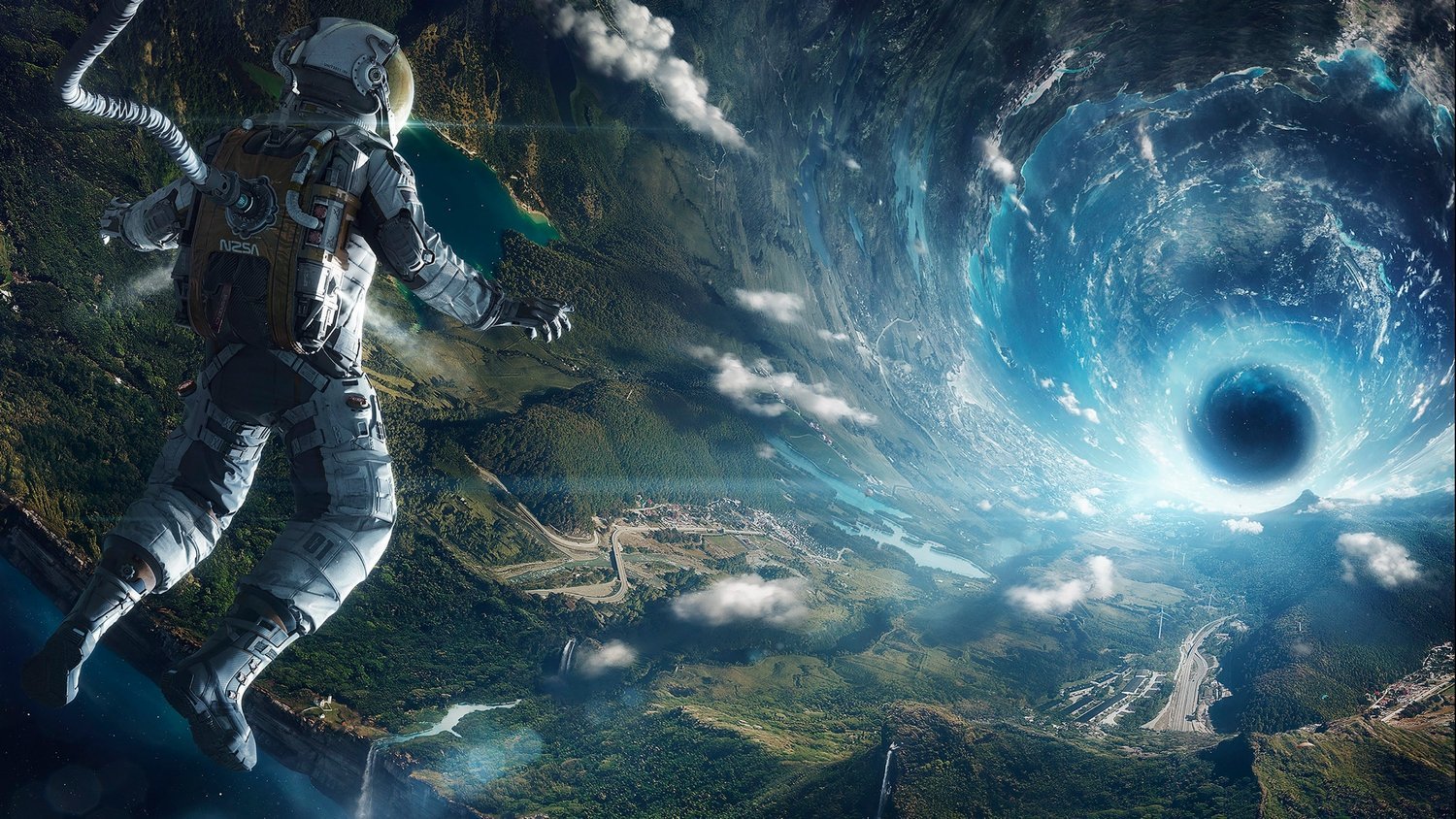
Perhaps the bulk of science fiction for all its existence - since the “ Flight to the Moon in a Direct Way in 97 Hours and 20 Minutes ” by Jules Verne — one way or another, it operates with ambitious products of scientific engineering thought. With the development of progress, the boundaries of imagination of scholars and writers expanded, and today in popular science and science fiction, engineering structures have already been described that deserve the term “megastructures” in scale and courage. We decided to collect a kind of rating of such structures. With some of them you are already familiar, and some will be a novelty.
Space elevator

( c )
The idea of an elevator was first formulated by Konstantin Tsiolkovsky in 1895. Today this technology is considered as the future method of cheap and permanent access to the near-Earth orbit. The cable stretching into the sky for tens of thousands of kilometers, beyond the geostationary orbit, along which the elevator is moving, carrying cargo and cosmonauts into space. One end of the cable will be fixed on the surface of the planet, and the second with an attached counterweight will be located above the geostationary orbit. In the role of the counterweight can be a suitable asteroid.
')
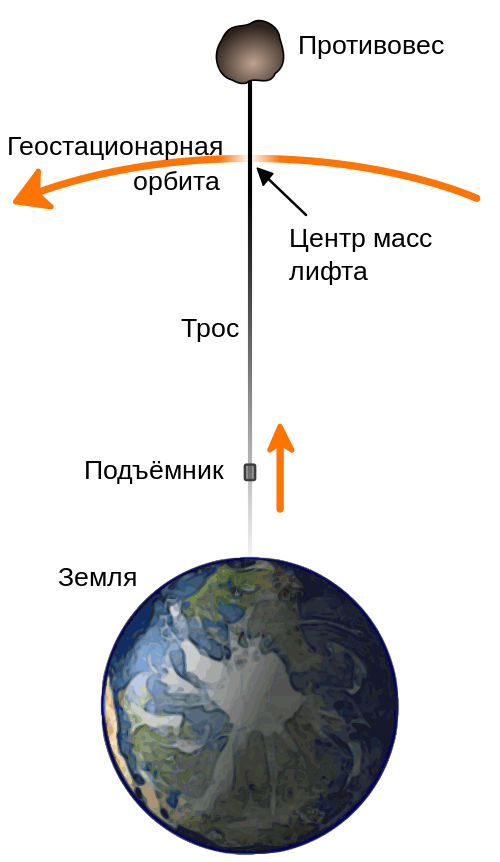
Ideally, the space elevator should be a step towards the creation of a space shipyard. According to several studies, the elevator can be built after the invention of extremely durable materials. For example, carbon nanotubes are considered a promising material. Although some scientists doubt that even the strength of this material will be enough so that the cable does not explode.
Stanford Tor
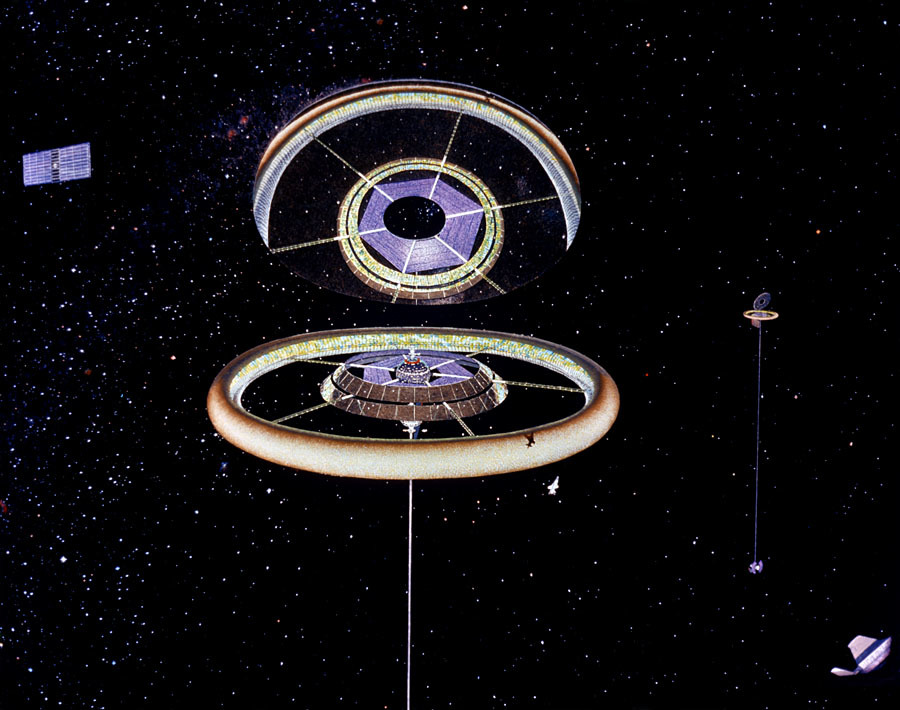
This is the first and smallest of the ring habitable structures on our list. The Stanford torus got its name thanks to a 10-week program for the development of engineering systems, which took place in 1975 among students at Stanford University. That year, a group of students proposed to create a manned station-colony for 10,000 inhabitants in the form of a toroidal structure with a diameter of 1.8 km. More precisely, it would look like a wheel: in the center of the station it was proposed to place a “hub” consisting of a system of mirrors reflecting light on the inside of the torus.


The hub should be connected to the rim through radial transport corridors, and mooring locks should be located in it. To ensure artificial gravity at the level of 1 g, the station rotates around an axis, passing perpendicular to the torus plane, at a speed of 1 revolution per minute. The torus itself can be closed — that is, it can be a looped pipe, or it can be open, in the form of a looped channel. In the second case, the atmosphere is kept inside the station due to centrifugal force.
It must be said that the idea of creating a toroidal rotating station-settlement does not belong at all to the Stanford students. This concept is mentioned in the book of Herman Potochnik (1928), in one of the works of Werner von Braun (1952), as well as in the Soviet popular science film The Road to the Stars of 1957.
The idea of building space stations in the form of a torus is very popular in science fiction, computer games and cinema. One of the most famous versions is depicted in the cult film " Space Odyssey 2001 ".
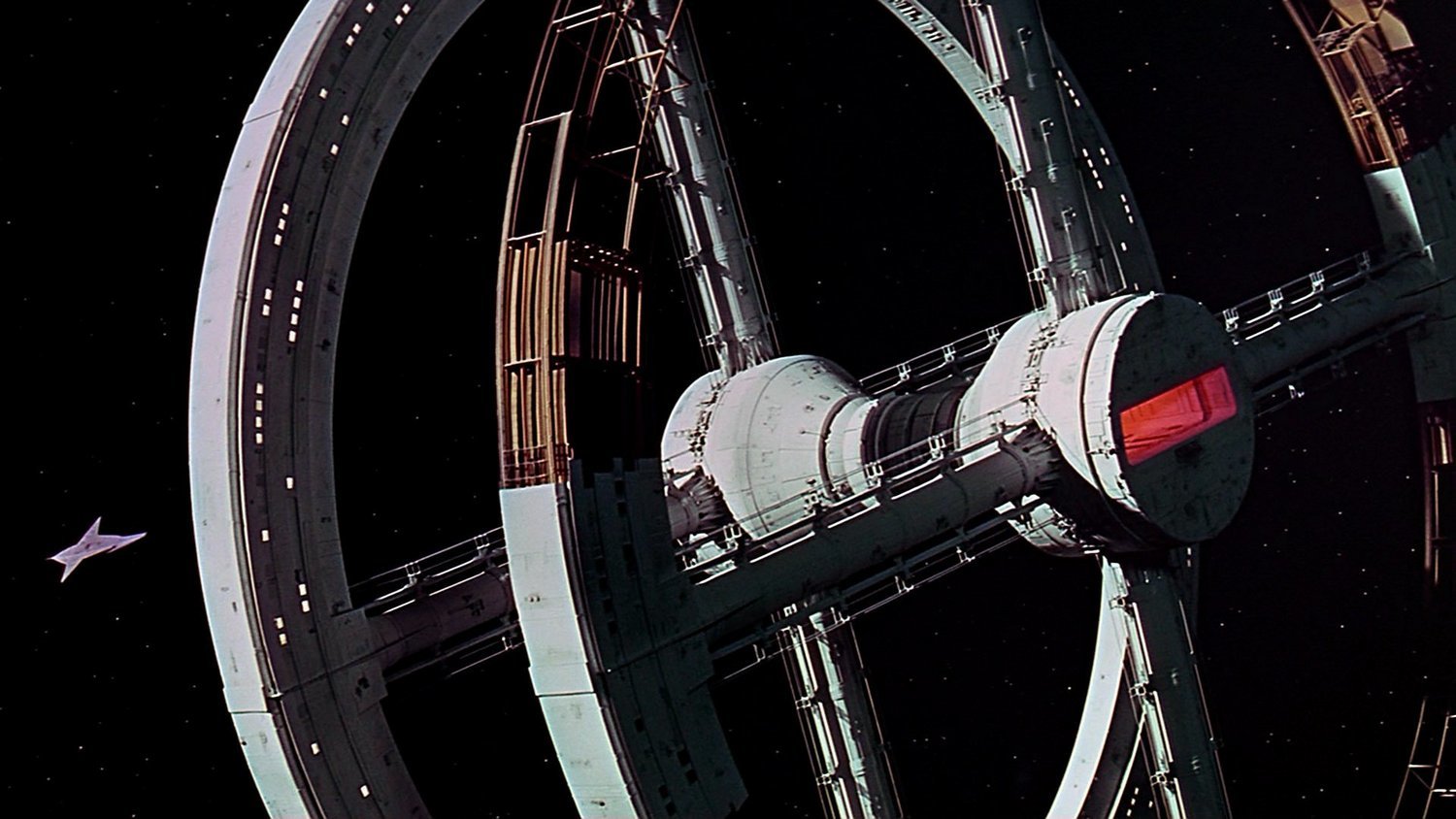
A much larger version of the Stanford torus (with some reservations) is shown in the film Elysium (2013), where the 40-kilometer ring - of an open type - is home to 10 million inhabitants.

Sphere of Bernal
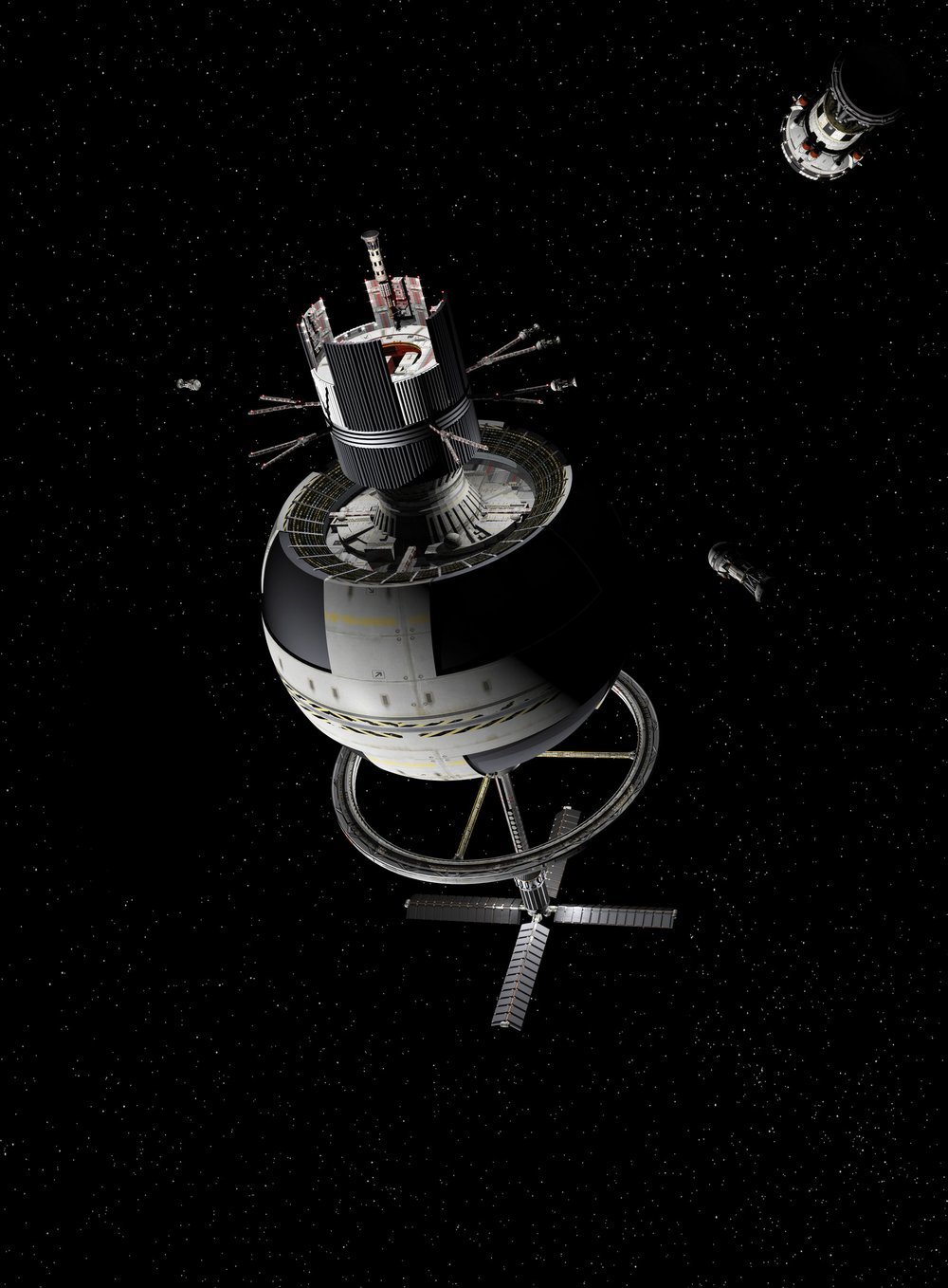
( c )
In 1929, John Bernal came up with the idea of a cosmic settlement in the form of a hollow rotating sphere filled with a human-fit atmosphere. With a diameter of 16 km, such a sphere can become home to 20,000–30,000 people. True, a fairly comfortable level of gravity is provided only in the equatorial belt.

The stations built in the form of the Bernal sphere are found in various fantastic works and games. For example, in the game “Mass Effect” (Station “Gagarin”), or in the novel “ 2312 ” by Kim Stanley Robinson, where the asteroids hollowed out from the inside play the role of Bernal spheres.
O'Neill Cylinder

In 1974, Gerard O'Neill, in his article “Colonization of Space” for Physics Today, described the idea of a giant cylindrical station . The cylinder 32 km long and 8 km in diameter consists of six longitudinal alternating sections: three transparent and three inhabited. Outside the cylinder, opposite the "windows", there are giant mirrors for directing sunlight into the cylinder. Gravity is provided by centrifugal force. Each of the three habitable segments is a separate “country”. Separate outer rings of larger diameter for farming are also provided, as well as external industrial sections located along the axis of rotation outside the cylinders.
Each country can accommodate up to a million inhabitants, and with an increase in the diameter and / or length of the cylinder, even more. According to O'Neill, cylinders can reach 24 km in diameter and 120 km in length. The usable living area within such giants would be about 18,000 square kilometers.
Despite the fact that the cylindrical stations were named O'Neill, a similar idea was described in Arthur Clarke’s novel “ A Date with Rama ”, published in 1973. So it is possible that the idea was picked up by O'Neill's students and subject to detailed elaboration.

From recent examples of the use of the cylinder O'Neill can result in the film Interstellar (Station "Cooper").
The Death Star
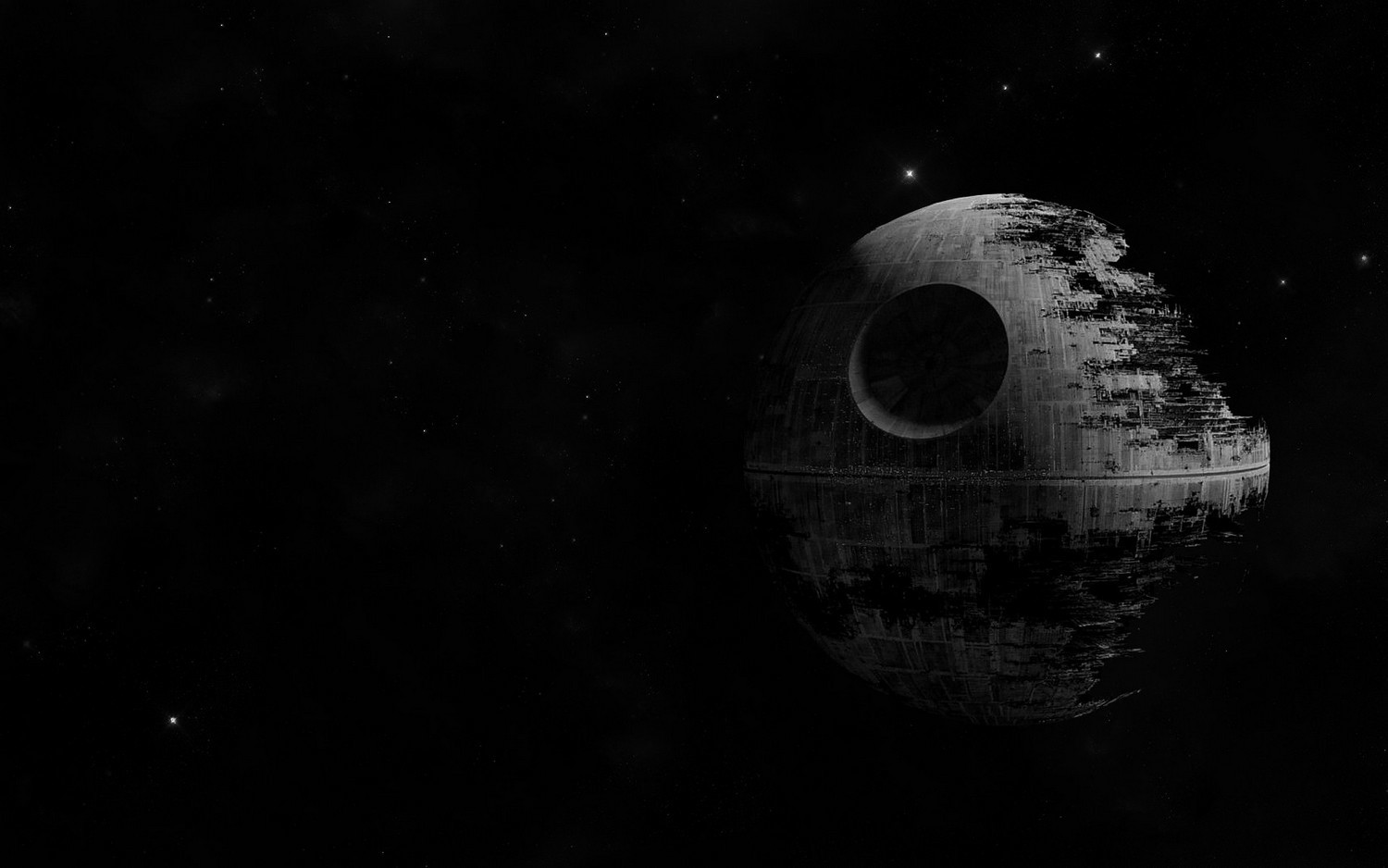
( c )
The most famous megastructure in science fiction . According to the literature of the Star Wars universe, such space stations were built several pieces, and they were designed to keep in check the subjects of the Empire - what could be worse than the destruction of the whole planet?
In different parts of the cosmic epic, the different diameter of the Death Stars is indicated: from 120 to 900 km in diameter. By the way, the smallest station in diameter is close to Epimetheus , the satellite of Saturn , and Pak , the satellite of Uranus . The crew of the Death Star is about 8 million people.
Globus Cassus
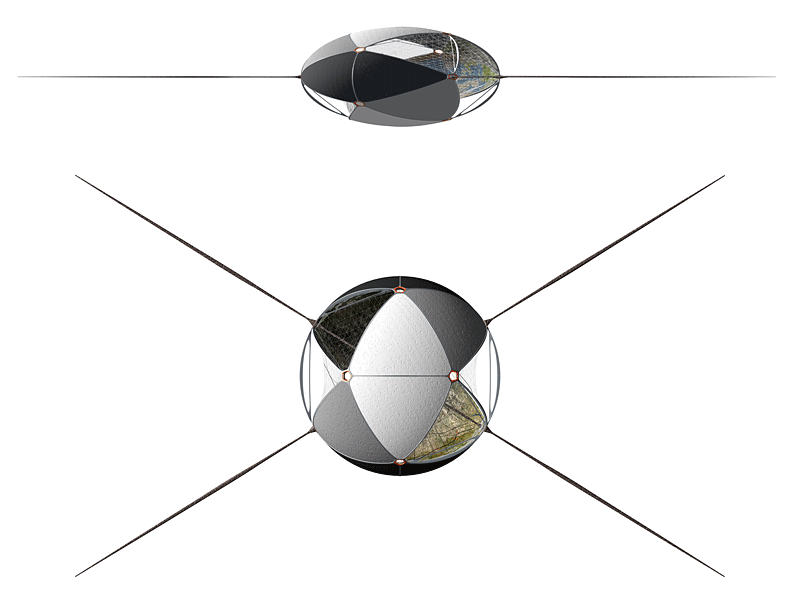
The project of this megastructure was proposed by the Swiss architect and artist Christian Waldfogel in 2004. It is a “geodesic icosahedron” flattened from the poles with two giant transparent sections for illumination. Gravity is traditionally provided by rotation. The diameter of the structure is 85,000 km (about 12,600 km from the Earth). Two segments of the sphere, located opposite each other in the equatorial zone, with the highest level of gravity are available for living. In the higher "tropical" zones, agricultural areas can be located, and the polar regions, with their microgravity, can be used as original warehouses and industrial sites.
In fact, according to Waldfogel's plan, the entire contents of the Earth should be placed inside the sphere ... That is, the planet will need to be turned inside out and create an artificial atmosphere, oceans and continents. Pretty bold idea. True, the author does not say where and how humanity should wait while transporting the contents of the planet.
World ring

( c )
In 1970, the novel "The World Ring " Larry Niven. This is not a pitiful torus on earth orbit — it is an inhabited closed ring around a star. The radius is 1 astronomical unit, the width of the ring is 1.6 million km, the length is 940 million km. Just an unimaginable amount of free space for the development of a highly developed civilization. And such a civilization must be VERY highly developed to be able to build a ring world. You will laugh, but even here it was not without rotation to create gravity and retain the atmosphere. Since in such a world there is no natural cycle of day and night, here it is created artificially with the help of rectangular reflectors rotating in orbits inside the ring with a different angular velocity.

( c )
The idea of ring worlds is reflected in the Halo shooters, however, there the dimensions are much more modest - only 10,000 km in diameter, and they rotate around other planets. Worlds-rings are also found in the cycle of Ian Banks' novels on Culture - there its diameter is 3 million km. A little less than the original, but to suffer from the cramped and fight for the territory just will not have to.
Alderson Disc
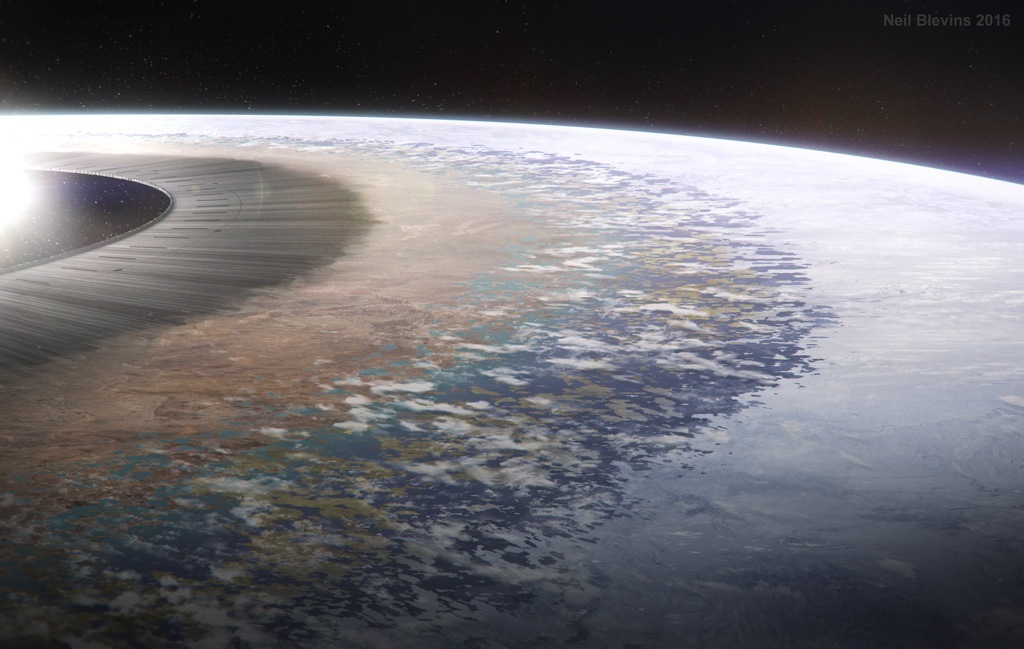
( c )
This is a further development of the idea of a world-ring: we are already talking about creating an artificial disk around a star several thousand kilometers thick. The author of the idea is Daniel Alderson , who participated in writing software for the Voyager-1 and Voyager-2 probes. For the solar system, the outer edge of the disk must pass between Mars and Jupiter.
Along the perimeter of the inner border of the disk, facing the star, there passes a high wall, partially protecting from the destructive radiation. The habitable area of the disc is in the zone of habitability . As in the case of planets, the inner and outer parts of the disk are unsuitable for human existence - the star is too hot, the outer edge is too cold. Although the technical achievements of the people of the future who are capable of creating such things can well make the less favorable areas of the disc habitable. In this case, it will be possible to live on both surfaces of the disk. At the same time, it will create a sufficient force of gravity, directed perpendicular to its plane, so that people can live comfortably.
According to rough calculations, the mass of such a disk will exceed the mass of the Sun. Moreover, the required amount of material is many times the amount available in the solar system. True, such a disc cannot be built from ordinary stones, for that there is not enough strength. So the construction of such a structure will require the creation of completely new materials of enormous strength, and their production is not even on a planetary scale, but on a “systemic” scale.
Alderson's disc is rarely mentioned in the literature. For example, in the Ultraverse comics and the Missile Gap novel by Charles Strauss.
Dyson Sphere

Another very popular among fans of fiction and futurism megastructure. Initially, the idea was expressed by Olaf Stepldon in the story “ The Creator of the Stars ”. But popularized her famous physicist Freeman Dyson . Dyson's sphere is a sphere (thanks, Cap), built around a star and collecting all the energy it emits. According to Dyson himself, the sphere should not completely cover the star.
Civilization, whose technological advances and energy needs led to the creation of the Dyson sphere, will receive an inexhaustible and colossal source of energy. For what? Well, for example, for supplying electricity to the Ninety Brain - not less than a colossal supercomputer, the power of which is served by an artificial superintelligence.
The idea of the Dyson sphere turned out to be so exciting that Stanislav Lem himself paid attention to it in his epochal book The Sum of Technologies . The great Pole to pieces has criticized this idea.
Today it is easier to say where the Dyson sphere is not mentioned, it is bent on all the fantastic and game angles. Another surge in popularity was associated with the discovery of the anomalous luminosity of the star KIC 8462852 in the constellation Cygnus ("WTF star") by astronomers. According to the world media, the idea was immediately replicated that the strange flickering could be related to the construction of Dyson's sphere around KIC 8462852 by aliens.
Shkadov's engine
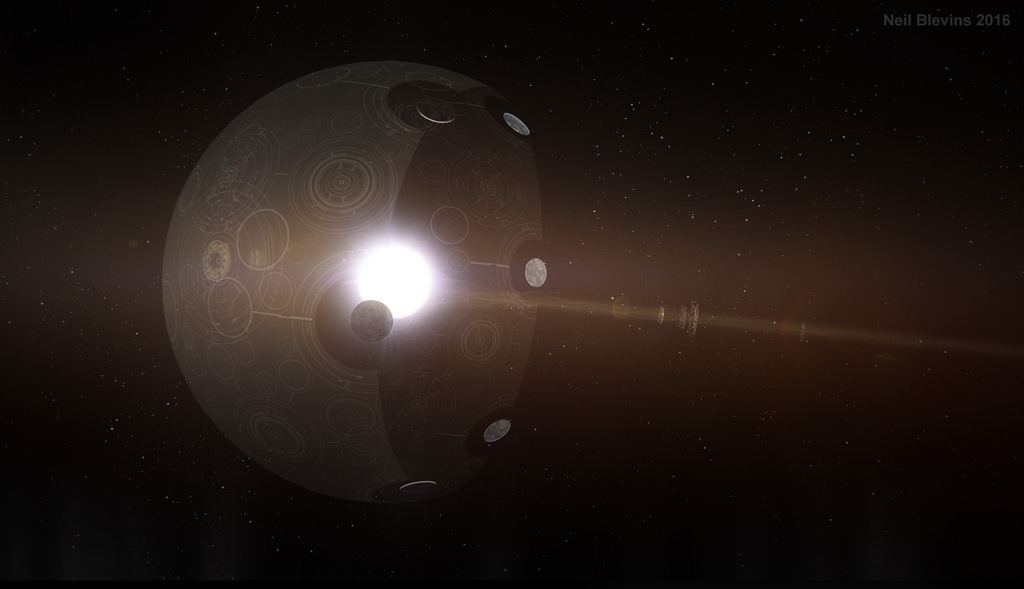
( c )
If you thought that the Dyson sphere is the apogee of the technological development of civilization, then you were right. But the engine Shkadova , perhaps, is not inferior in flight thought. Why build interstellar arks and go to unknown distances on fragile ships? Let's move your star system! Shkadov's engine is a type of Dyson's sphere, which is a giant solar sail. The idea was first put forward by Leonid Shkadov in 1987 at the 38th Congress of the International Astronomical Federation in the UK.
According to the plan of the scientist, the star will move after the sail built around it, and with it all the planets. True, the speed will be very small, but constant. For example, the Sun with the Shkadov engine would have moved by only 0.03 light years in a million years. But gradually the speed will increase, and in a billion years our star will move by 34,000 light years - a third of the width of the Milky Way . Within the framework of such a project, the term “long-term” takes on a completely different meaning.
Source: https://habr.com/ru/post/396301/
All Articles